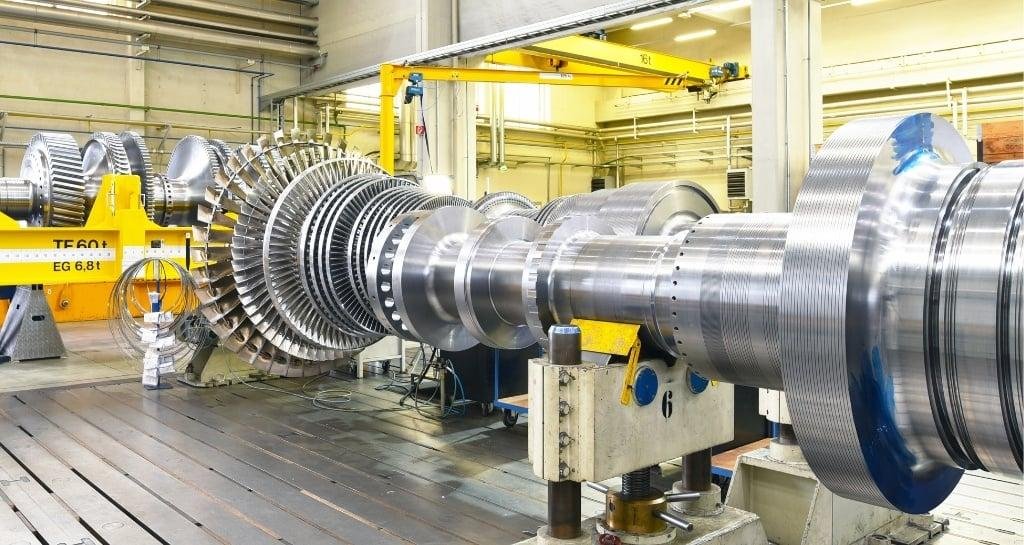-
Новости
- ИССЛЕДОВАТЬ
-
Статьи пользователей
-
Группы
Gas Turbine Market Emerging Trends 2025–2035: The Future of Flexible and Clean Power

The gas turbine market is undergoing a transformative shift, propelled by advancements in technology, increasing environmental concerns, and the global pursuit of clean energy alternatives. As countries strive to balance growing electricity demands with climate goals, gas turbines remain a key player in the energy mix—providing flexible, efficient, and reliable power. The emerging trends in the gas turbine market from 2025 onward highlight a compelling future defined by innovation, decarbonization, and digitalization.
1. Hydrogen-Ready Gas Turbines
One of the most significant trends reshaping the gas turbine industry is the move toward hydrogen-ready turbines. As the world accelerates efforts to reduce carbon emissions, hydrogen is being hailed as a key clean fuel for the future. Manufacturers are now designing turbines that can operate on hydrogen blends—ranging from 30% to 100%—to reduce dependency on natural gas.
Companies such as Siemens Energy, GE, and Mitsubishi Power are investing heavily in R&D to commercialize turbines capable of running entirely on green hydrogen. This innovation is expected to create new demand in regions with ambitious hydrogen roadmaps, particularly Europe, the U.S., and Japan.
2. Digitalization and Predictive Maintenance
Digital transformation is another major trend revolutionizing the gas turbine market. AI-driven analytics, IoT sensors, and digital twins are increasingly being used to monitor turbine performance in real-time, allowing operators to predict equipment failures and schedule maintenance proactively.
Predictive maintenance not only reduces downtime and operational costs but also improves overall efficiency. Digital twins—virtual replicas of gas turbines—simulate real-world performance under different conditions, enabling engineers to optimize design, troubleshoot issues, and extend turbine lifespan.
3. Decarbonization and the Energy Transition
The global shift away from coal and toward cleaner energy sources has cast gas turbines in a new light. While not emissions-free, natural gas is significantly cleaner than coal, and gas turbines offer a dependable solution to complement intermittent renewables like solar and wind.
Many countries are now leveraging gas turbines as a bridging technology during their energy transition. Modern combined cycle gas turbine (CCGT) plants, for instance, offer higher efficiency and lower emissions compared to traditional plants, making them a popular choice for utilities undergoing decarbonization.
4. Small-Scale and Distributed Power Generation
As industries and communities seek localized energy solutions, there is a growing demand for small and mid-sized gas turbines used in distributed power generation. These turbines are ideal for off-grid or semi-grid locations, remote facilities, and industries that require reliable power independent of national grids.
This trend is particularly strong in developing economies and in sectors such as oil and gas, mining, and manufacturing, where operational continuity is vital. The compact size, efficiency, and modular nature of these turbines make them suitable for integration into microgrids and hybrid energy systems.
5. Combined Heat and Power (CHP) Applications
Another emerging trend is the increased use of gas turbines in CHP (cogeneration) applications, where both electricity and useful heat are produced from a single fuel source. CHP systems are highly efficient and reduce fuel consumption, making them attractive for hospitals, universities, and industrial facilities.
With rising energy costs and stricter environmental regulations, CHP-powered gas turbines offer a cost-effective and sustainable solution that enhances energy security and reduces greenhouse gas emissions.
6. Technological Advancements in Materials and Design
To boost performance and durability, turbine manufacturers are incorporating advanced materials such as ceramic matrix composites (CMCs), which can withstand higher temperatures and reduce cooling needs. These innovations improve thermal efficiency and lower fuel consumption.
Additionally, additive manufacturing (3D printing) is being increasingly adopted to produce complex turbine components, speeding up production, reducing waste, and enabling rapid prototyping. These technologies are expected to streamline the supply chain and drive customization in turbine design.
7. Grid Flexibility and Rapid Start Capabilities
The need for grid flexibility is pushing the development of gas turbines with faster start-up times and greater load-following capabilities. These features allow turbines to ramp up quickly in response to fluctuations in renewable power generation, such as when the sun sets or the wind dies down.
Fast-start turbines enhance grid reliability and help utilities maintain a stable power supply despite the variable nature of renewables. This trend is particularly relevant in markets with high renewable penetration like California, Germany, and Australia.
8. Environmental Regulations and Efficiency Standards
Stricter environmental regulations worldwide are compelling turbine manufacturers and plant operators to enhance the emissions control systems of their gas turbines. Technologies like dry low-NOx burners and carbon capture systems are being integrated into new and existing turbine installations.
Governments are also setting minimum efficiency standards, encouraging the deployment of high-efficiency turbines and combined-cycle systems. These regulations, while challenging, are also driving innovation in turbine design and operation.
Conclusion
The gas turbine market is being reshaped by a convergence of environmental, technological, and economic forces. From hydrogen readiness and digital monitoring to distributed energy and CHP integration, these emerging trends are positioning gas turbines as essential components of the global energy transition.
Looking ahead, gas turbines will continue to evolve to meet the dual demands of cleaner energy and reliable power generation. By embracing innovation and aligning with global sustainability goals, the gas turbine industry is poised to play a dynamic role in the future of energy from 2025 through 2035 and beyond.






